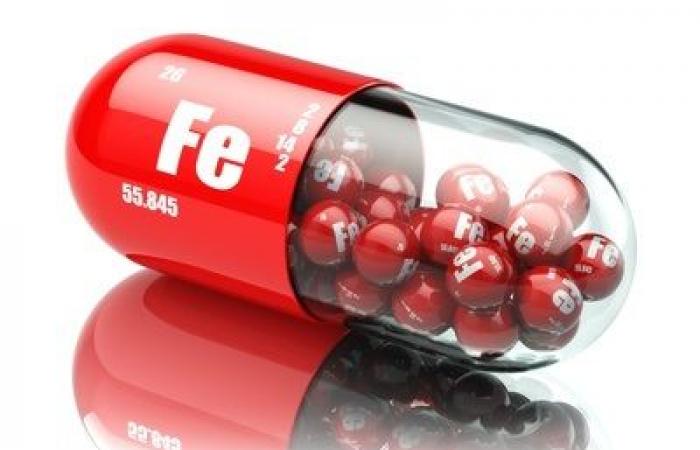Indeed, as we age, our hematopoietic stem cells (HSCs) become less able to produce new red and white blood cells and other vital blood components, which can contribute to the development of chronic inflammation, blood cancers and other degenerative diseases. Lead author Dr. Britta Will, associate professor of oncology, medicine, and cell biology, summarizes the discovery: “By lowering iron levels inside the cell with a clinically available drug, we were able to restore a pool of young HSCs in older mice. This simple therapeutic strategy holds promise in humans for slowing inflammatory diseases, cancers and other age-related diseases.”
An unexpected role of iron in blood stem cells
This research began in 2018, with the observation of the effects of a drug, eltrombopag, used to increase blood platelet levels, on the activity of HSCs. The team then observed that eltrombopag removed or chelated iron from HSCs.
The study Current research confirms that the amount of iron inside HSCs determines cell fate and function. After analyzing HSCs, the researchers found that:
- Excess intracellular iron activates inflammation within HSCs and pushes them into dormancy, a state in which a cell’s functions are significantly slowed. This dormant state limits the ability of HSCs to make more copies of themselves and produce sufficient numbers of quality blood cells;
- conversely, HSCs with restricted iron levels multiply more easily and respond effectively when more blood components are needed;
- iron restriction regulates and protects the regenerative capacity of stem cells, their ability to divide and differentiate into blood cells;
- in young mice, low iron triggers a molecular response in HSCs that temporarily increases fatty acid metabolism, thereby reinforcing the genetic programs of HSCs that enable their proliferation;
- in contrast, HSCs in aged mice contain increased iron levels that inhibit the activation of this “proliferation” pathway arising from fatty acid metabolism;
- Removal of iron from HSCs again improves blood cell production in old and aging mice.
Medicines already available? The researchers used – here, in mice – deferoxamine for 14 days.
Aging is widely associated with systemic iron deficiencywhich is why doctors often advise older adults to take iron supplements or eat more iron-rich foods. Iron supplements reduce the risk of iron-deficiency anemia, which is a source of many health problems. These recommendations are still valid, the researchers say, noting that iron metabolism can deteriorate with aging, leading to iron deficiency in some organs and iron overload in others, particularly the bone marrow, where many HSCs are found.
However, chelators, by neutralizing the iron load inside HSCs, may allow them to remain healthy into old age. But, like all experimental strategies, this approach needs to be evaluated in a clinical setting to ensure that it is safe and effective.
The question will therefore be to achieve safe iron reduction in a targeted manner in the CSH during aging.






